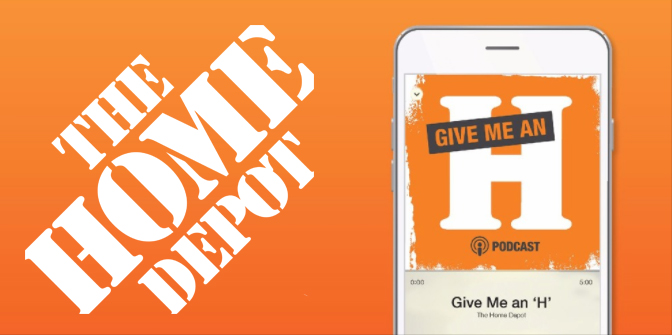Just about every company, at least the ones with even an ounce of good sense, know the importance of their employees. But for some, employees are literally the face of their brand.
One of those companies, The Home Depot, is taking an interesting approach toward developing and nurturing that resource.
You could argue that employees are more than the face of The Home Depot brand. To a large extent, they are the brand. Sure, you enter the store under the big, orange sign, and buy products from the big, orange racks.
But those products all fly the flags of different brands. As a shopper, your interaction with the Home Depot brand is with the orange smocks and the smiling, helpful faces above them. Without those faces, The Home Depot has almost nothing (leaving e-commerce out of it for now).
The Home Depot clearly realizes this, and is putting considerable effort into making sure those faces stay smiling and delivering the brand promise.
You see this same dynamic in other sectors, notably Southwest Airlines and their famously chipper gate agents, flight attendants and pilots. The fact that Southwest employees are (almost) always cheerful is no accident. It’s a direct result of their hiring policies, and employee communication.
For The Home Depot, the goal is for their employees to be as helpful and friendly as possible. That comes from keeping their employees engaged in the goings-on of the company.
Employee Engagement
A few weeks ago, The Home Depot started “Give Me an H,” a podcast aimed at employees, focusing on the retailer’s culture.
The podcast is essentially a weekly rally cry for employees, giving them insights into why the company does things the way they do, how important it is to maintain a customer-service focus, and how important employees are to the company.
Podcasts are undergoing a renaissance of late, becoming an increasingly popular means of communication. “Give Me an H” is an interview-style podcast, hosted by the retailer’s human resources honcho, who interviews a different person each week.
The podcast’s goal is crucial: to engage employees. To speak directly to them and reinforce the company’s culture, so that it is brought to life in the store aisles.
With more than 400,000 employees, making them live the Home Depot brand is difficult, and the podcast is an interesting way to try to make it happen.
But there is also another benefit to the podcast.
A Nod to Consumers
The “Give Me an H” podcast is not distributed through a private, internal channel. It’s available for everyone to listen if they want. This is by design.
We’ve seen this from other brands, like 84 Lumber, who targeted potential employees with their messaging, though everyone can see it.
Like the 84 Lumber commercials, the Home Depot podcast, in essence, “trains” the consumer what to expect when they walk into the store. It plants the seed in their mind that Home Depot employees are nice and conscientious, and that the company cares about them.
It’s up to the employees to pay off that promise, of course, but by reaching both the employee and the consumer simultaneously, they’re greasing the wheels.
There’s just one small problem.
Great Idea, Execution Lacking
From what we can tell, the “Give Me an H” podcasts are very well done. They have good, in-depth content and a sincere message.
We’re just not sure what kind of an audience they’ll attract.
People are busy. They don’t want to take time to listen to a 10-minute interview unless they’re really interested. And we mean, really interested.
So, unfortunately, the podcast is unlikely to get much attention from consumers. That’s probably okay, since it may not have been Home Depot’s true intention.
But they don’t appear to be getting much attention from employees, either. Statistics on Soundcloud show listenership of each episode to be less than 2,000 (with the exception of the first one). That’s one-half of one percent of their employees.
Perhaps it gets a bigger audience on an employee intranet site, we’re not sure.
But overall, the podcast is just a bit dull, and we don’t think it’s likely to continue in its current state.
But that doesn’t mean it’s a bad strategy. It’s an excellent one, in our view. They just need to figure a better way to grab, and keep, the audience’s attention.




